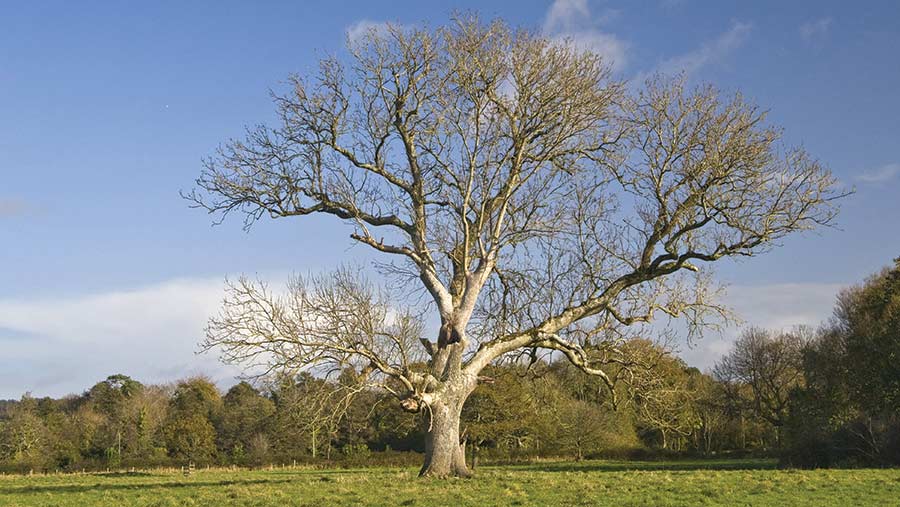Business Clinic: Protecting the public from tree felling work
 © FLPA/Shutterstock
© FLPA/Shutterstock Whether it’s a legal, tax, insurance, management or land issue, Farmers Weekly’s experts can help.
Here, Nigel Wellings of Acres Insurance Brokers advises on appropriate public liability coverage.
See also: Business Clinic: Should I increase our public liability cover?
Q: We have a number of trees suffering from ash dieback on our farm.
Finding a contractor to remove them is taking time, I am concerned as some of the trees are adjacent to a minor road and others a public footpath.
If a tree comes down and cause injury or damage will my insurers deal with the resulting claim and is there anything I can do to protect myself in the meantime?
A: Ash dieback is likely to become an increasing problem for farmers and landowners over the next decade as this disease becomes more widespread in UK trees.
Ash is the third most common UK broadleaf tree, so the effects will be serious.
The first thing farmers will need to establish is who is ultimately responsible for the trees. As an occupier of land you have a common duty of care under the Occupiers Liability Act of 1957.
This means you must take all reasonable precautions to ensure the safety of those on your land.
There are further duties under the Health and Safety at Work Act 1974 to ensure that people are not exposed to risks to their health and safety.
An owner occupier will obviously have full liability but on tenanted or rented land responsibilities can vary, so check your agreements.
In normal circumstances I would expect a farmer’s public liability insurance to pick up any liability that emanates from a tree falling that causes damage or injury.
Reasonable precautions
However, be aware that any insurance policy will have a clause within it saying that the policyholder must take all reasonable precautions to prevent losses and comply with all current legislation.
To ensure compliance with this it is sensible that farmers should have a written risk assessment regarding trees on the farm, especially those bordering areas of public access, i.e roads and footpaths.
This can be carried out by the farmer, but will stand scrutiny better if carried out by an arboriculturalist or forestry consultant.
Part of the tree risk assessment will involve a plan of how to deal with the diseased trees.
Advice from the forestry industry favours the use of mechanised harvesters and tree shears, with many arboricultural contractors working from cherry-pickers.
Risks are high for the operative using traditional felling techniques because of the unpredictability caused by the disease.
If you have done such a risk assessment and are about to implement tree management measures then I would expect your farm public liability insurance to deal with any claim that should arise from the trees.
Consider the limit of indemnity on your policy though – £10m is a minimum and in many cases an increase may be required.
